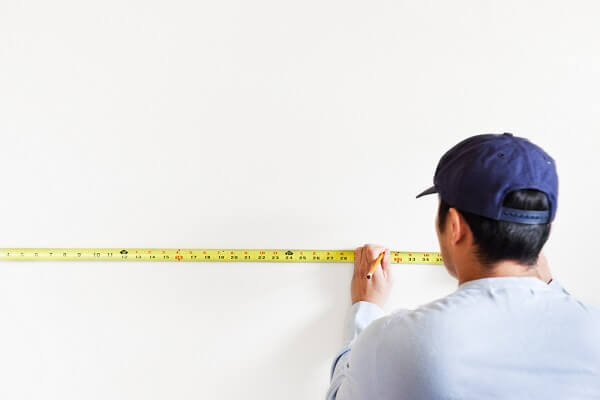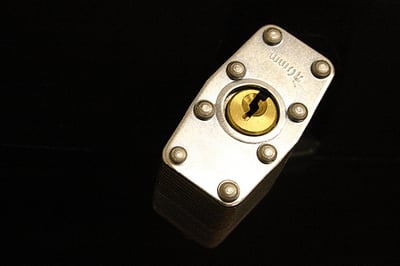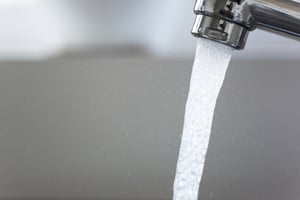 Life is full of big and exciting 'firsts'. First steps, first day of school, first car, first love, first time moving out of your parent's house, and if you work hard and have some luck on your side, first time you buy your own home.
Life is full of big and exciting 'firsts'. First steps, first day of school, first car, first love, first time moving out of your parent's house, and if you work hard and have some luck on your side, first time you buy your own home.
I may be a bit younger than the average home owner, but at age 21 I thought I basically had it all figured out. I had rented more than a dozen houses before purchasing one, how different could it really be? After being in our home for a couple of weeks I realized I don't know the first thing about home repair or keeping my hardwood floors nice, let alone owning something so major in the first place.
That's why I gathered these 5 basic (emphasis on basic) but useful skills to help guide you through the transition of being a scared first time home buyer to one with extreme confidence who can take on anything. Hopefully they will help ease some first time home buying anxiety within you.
1. How to locate a stud without a stud finder.
Usually, I would just decide where I want a picture hung and go for it, regardless of the presence of a stud or not. I'll never forget standing on a chair in my kitchen, ready to hang a 5 lb. decorative chunk of palette, when my father in law yelled at me to get down and showed me the art of finding studs without an electronic stud finder.

Whether you’re hanging a small picture or a heavy shelf, I learned it’s important to put a nail or screw directly into a stud instead of just drywall. The stud spacing is typically 16” away from each other, or a little less common- 24”. Find an electrical outlet and measure 16” from the center of the outlet. Use a drill with the smallest drill bit and drill into the wall above the baseboard where you think the stud is located. If you hit wood, VOILA, you have found it! Hang away! (Or you could just spend $20 and get an electronic stud finder).

2. How to unjam a stuck lock.
One of the most frustrating things ever is when you know you are using the right key but it just won't turn to open the door!
The lock mechanism may not be working simply because the lock is dirty or dry and needs to be lubricated with graphite or WD-40. If that doesn’t work, the spring or tumbler may be broken...in that case you probably need to replace your knob or call the professionals in.
3. How to use a fire extinguisher.
I hope you will never be in the situation where you will have to use this skill but if the event arises, you need to be prepared for it.
The typical extinguisher contains only 10 seconds of extinguishing power, so if the day ever comes that you need to use yours, you will want to be as precise as possible. Some extinguishers are different, but all operate in a similar manner. Remember the acronym ‘PASS’
 P- PULL the pin at the top. This allows you to discharge the extinguisher.
P- PULL the pin at the top. This allows you to discharge the extinguisher.
A-AIM at the base of the fire, not the flames. (You have to extinguish the fuel, not the flames).
S-SQUEEZE the lever slowly. If the handle is released, the discharge will stop.
S-SWEEP from side to side. Begin from several feet away and move closer as the fire begins to go out. Be sure to read the instructions on your extinguisher because some have different operating distance recommendations!
Click here to learn more about the type of fire extinguisher you should be using.
4. How to stop an overflowing toilet
We’ve all felt the anxiety of watching as the toilet water rises closer and closer to the top of the bowl and you panic as you realize you have no idea what to do-well say good bye to those days.
Step 1.
Locate the supply line near the bottom side of the bowl; there should be a valve. Turn counterclockwise to stop the flow of water to your toilet.
Step 2.
If you can’t find the valve, (or don't want to be down on the floor while there is a toilet overflowing all over the floor) remove the tank cover. Lift the float high enough so that the water stops running. If the water continues to run, this brings us to our next skill: shut off the water supply to the house.
5. How to Shut Off The Main Water Valve.

The water supply is typically located in the basement near the water heater and looks like a valve or a knob. Turn until the water stops running. Doing so eliminates the immediate problem of the flowing water, and could potentially save you thousands of dollars.
There you have it-the five skills I wish somebody had told me prior to buying my first home. If you can relate or have stories to share involving your first home, please share in the comments below!
Happy Learning!

-1.png)

